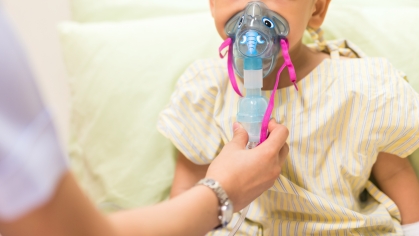How does the placenta keep harmful substances away from developing babies while still providing proper nutrition?
The exact mechanisms remain unknown, which is why Rutgers University, Tulane University, the University of Pennsylvania, the University of North Carolina at Chapel Hill and the University of Rochester teamed up to launch a research center dedicated to solving this mystery and ensuring healthy pregnancies.
A $5 million grant from the National Institutes of Health (NIH) will help fund the Integrated Transporter Elucidation Center (InTEC), which will operate from the Rutgers Biomedical Health Sciences campus in Piscataway under the leadership of Lauren Aleksunes, a professor of pharmacology and toxicology at Rutgers’ Ernest Mario School of Pharmacy and resident scientist in the Environmental and Occupational Health Sciences Institute (EOHSI).
“Since my time working as a community pharmacist, I have found the lack of high-quality information about the safety of everyday products on the health of a pregnancy frustrating. People need to know whether the chemicals in their diet, personal care products, and medications can impact their babies. Our goal at InTEC is to better understand how these chemicals travel in and out of the placenta and if they can reach the baby and influence their development.” Aleksunes said.
Her team, which includes five other Rutgers researchers, will study how transporter proteins carrying nutrients, dietary supplements, medications, and toxic chemicals work during pregnancies. Some of the work will test how individual placenta cells respond to various stimuli in the laboratory. Others on the team will examine how environmental factors influence placental transporters during healthy and unhealthy or complicated pregnancies.
Data from the University of Rochester Medical Center’s Understanding Pregnancy Signals and Infant Development (UPSIDE) birth cohort study, in coordination with Emily Barrett at the Rutgers School of Public Health and EOHSI, will undergo analysis to help researchers understand how transporters are regulated during pregnancy.
Another team operating under Hao Zhu at Tulane will use machine learning and computer science approaches to identify new interactions between transporter proteins and chemicals. A third team operating under Dan Huh at Penn will use an innovative model — a vascularized placenta-on-a-chip — to simulate the transfer of molecules across the human placenta.
Researchers led by Jacqueline Tiley at the University of North Carolina at Chapel Hill will use tools they developed to identify relevant proteins and how those proteins can be monitored in the blood across pregnancy.
“The biology is extremely complex, so the InTEC team naturally includes leading experts from various distinct but related fields, each of whom brings something unique and critically important to the table,” Aleksunes said.
InTEC team members said they hope their work creates scientific approaches to study how chemicals selectively pass across the placenta, approaches that will soon be used by many clinicians at the intersections of pharmacology, chemistry, computer science, public health, medicine and bioengineering.
More importantly, they hope their work leads to more healthy pregnancies and children.




